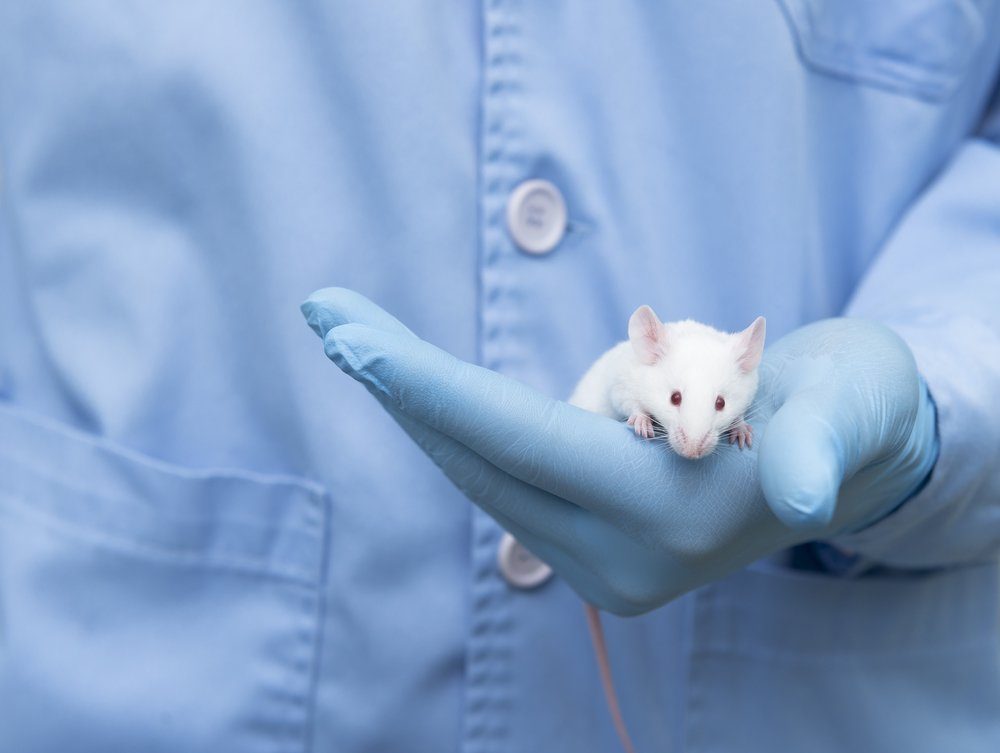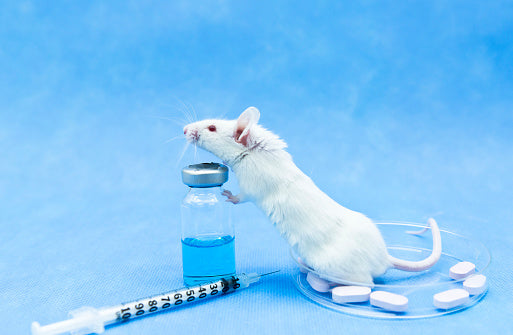Tamoxifen Inducible Cre Recombinase System
When studying gene and protein functions of basic biological processes, or modeling human diseases in mice, it is sometimes necessary to add, remove or disrupt a gene from the mouse to see the phenotype (=the symptoms) unfold. This can be done by a variety of genetic methods, such as gene targeting by homologous recombination, random transgene insertions, knockout or knock-in, CRISPR method...etc. (3). It is also possible to activate or delete a specific gene, either at a specific time in the development (embryo, pup, adult) or in a specific tissue of interest (heart, kidney, nerves...etc..). In that case, conditional models can be designed.
The most widely used system for conditional knockout (gene inactivation) is the Cre-lox system (4-6). In this system, the gene of interest is flanked by 2 palindromic sequences (loxP). Cre Recombinase, a topoisomerase from bacteriophage P1, specifically recognizes and recombines the 2 loxP sites, excising the gene sandwiched in between. With the gene deleted, the pathway or disease can then be studied. But, how, when and where is the Cre enzyme expressed?
The Cre gene is inserted in the mouse genome and expressed under the control of a promotor: a sequence of DNA that turns the gene on or off, and controls WHERE (in which cells and tissues) the gene is expressed. By putting the Cre under the control of the promoter of choice, Cre is expressed in the tissue of interest. Going one step further, in order to control WHEN the Cre enzyme will function, the Cre protein is fused with a modified estrogen receptor, that gets activated when bound with tamoxifen, and in turn activates the Cre protein (by moving it to the cell nucleus).

Therefore, for this system to work, two transgenic lines of mice are needed: one expressing the flanked gene, and one expressing the Cre/ER gene. Once crossed together, the double transgenic mouse has to get induced with tamoxifen for the system to turn on: the gene of interest is then removed and the mouse develops the disease.
Ways to deliver Tamoxifen to Mice
Tamoxifen is a hazardous material - make sure to handle it properly. It is also light sensitive, therefore making fresh solutions is recommended. There are several ways to administer tamoxifen to mice, each with advantages and disadvantages (7):
- Intraperitoneal injections: it is the most used method as the amount of administered compound can be better controlled (8). After diluting tamoxifen in corn or peanut oil, the average dose to inject is approximately 75 mg tamoxifen/kg body weight. Larger doses up to 300mg/kg body weight can be considered safe, but doses higher than that can lead to overdosing, toxicity and mortality (9). However, mice need to be injected every 24h for at least 5 consecutive days (10). This method is very stressful for the mice and demanding on the caretakers.
- Gavage: This is very stressful on the mice and requires highly skilled technicians. The mice have to be restrained tightly at their neck and a feeding needle has to be inserted behind the tongue.
- Pelleted food: this way of administration is less stressful for the mice, and a few vendors offer a commercially available chow. The standard concentration is 400 mg of tamoxifen citrate/kg of irradiated food.
- Water: powdered tamoxifen has a very low solubility in water, and should be first diluted in ethanol as a concentrated stock solution, then diluted in water for a final concentration of 1mg/ml.
- Gel Supplements: ClearH2O's MediGel® Sucralose and DietGel® Boost are highly palatable gels to mask the bad taste of tamoxifen. They are a good alternative for researchers looking to make the delivery process easier, less invasive and more aligned with the 3Rs. Given that our cups are about 50g, our suggestion is to add 20mg tamoxifen citrate per cup, which is equal to the recommended dosage of 80mg/kg body weight/day.
Find out what people say about the different routes of administration:
"Food pellets that contains Tamoxifen are commercially available, but mice usually do not like the taste; feeding mice with it will always cause significant weight loss. Administration via injection can cause too much stress for the mice" - DZ from UPenn
"Finding a means of adding tamoxifen without an invasive procedure is ideal" - NT from MSU
"Mice tend to lose weight on the tamoxifen pelleted chow: some strains are very sensitive and we can lose from none up to 20% of the treated mice" - TW from UVM
"Even with skillful persons, we lose about 5-10% of our mice due to bad gavage" - FL from LB
To try out our gels with tamoxifen, request a sample!
If you'd like to work on a collaborative study with tamoxifen, please contact us!
References:
(1, 2) Breastcancer.org is a nonprofit organization dedicated to providing information and community to those touched by this disease.
(3) Customized Mouse Models - genOway specializes in genetic designs to serve genetically modified mice, rat and cell lines
(4) Cre-lox Basics: Cre-lox Technology in Mouse Modeling
(5) Advanced Cre-lox: Generating Reporters, Inducible Mice, and Disease Models
(6) Cre Lox Breeding for Beginners
(7) Tamoxifen administration to mice - OpenWetWare
(8) Tamoxifen Administration to Mice - Whitfield, 2015
(9) MiceTech Talk Episode 17: Let's Talk Tamoxifen (Sept. 8, 2020) - The Jackson Laboratory
(10) Intraperitoneal injection of tamoxifen for inducible cCre-driver lines - The Jackson Laboratory
Featured image from MDNews




Leave a comment
All comments are moderated before being published.
This site is protected by hCaptcha and the hCaptcha Privacy Policy and Terms of Service apply.